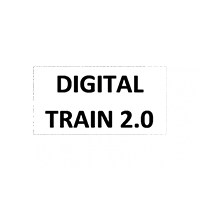
The Action “Digital Train 2.0” ‘is a continuation of the successful Action “Enhanced real-time communication about train composition and estimated time of arrival” to continue to address and solve concrete operational interoperability issues to attract railway clients (Priority 3). In addition, it tackles important issues for international rail freight related to technical and operational interoperability, namely the implementation of the Redesign of the International Timetabling Process (TTR).
The Action is divided in 3 activities which are briefly described below:
- Based on the result of the previous call a mapping between the train composition (locomotion wagons, container, …) and tracking and tracing information will be enhanced. Starting from the already existing point-based train information data, new methodologies based on continuous transmitted GPS information from wagons and containers will be developed. This additional information completes and close the gap between fixed point-based information and continuously moving train objects (Locomotives, Wagon, Containers).
- The overall objective of the Action is to align all stakeholders behind the strategic intention and need for the Q-ELETA project. The feasibility study shall serve to further outline and confirm project scope, budget, milestones, deliverables and project approach (project charter). This will also serve as the basis and justification for the subsequent implementation. Under the feasibility study CTO’s being rail freight customers and therefore being recognised stakeholders, will be allowed and enabled TIS for monitoring the punctuality of their trains.
- The Timetable and Capacity Redesign programme (TTR) provides a new and innovative capacity management process to better serve market needs and increase efficiency in the path allocation process. It integrates all aspects of capacity planning into one process and enforces the digitalization of capacity management.
UIRR is responsible for the Q-ELETA feasibility study, for integrating additional terminals into RNE TIS system and for supporting RNE in developing the right reporting tool for CT trains.

